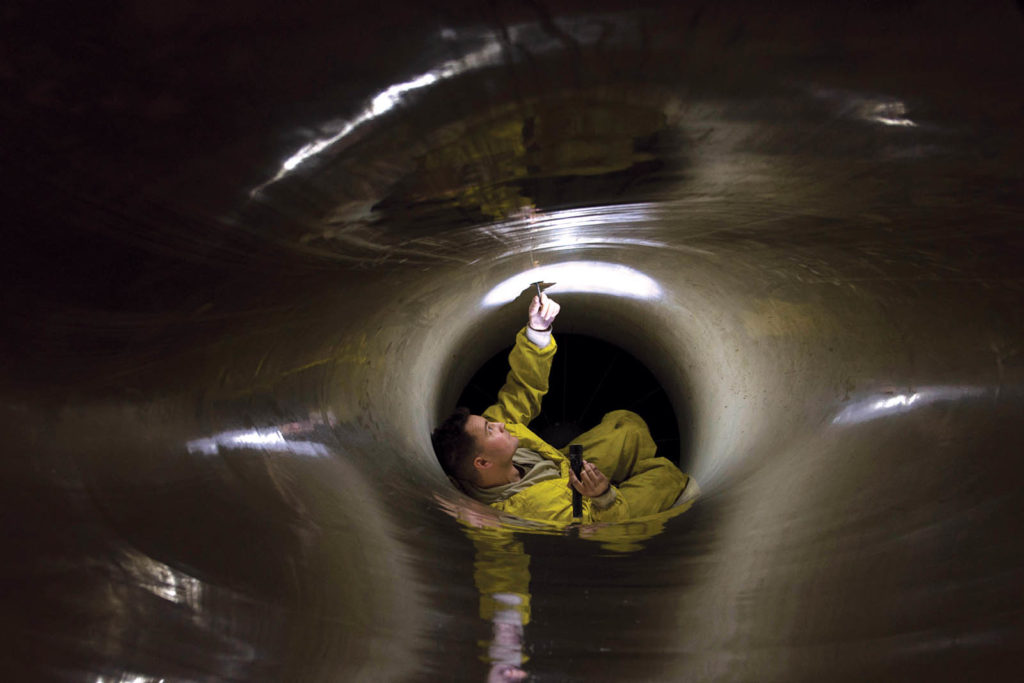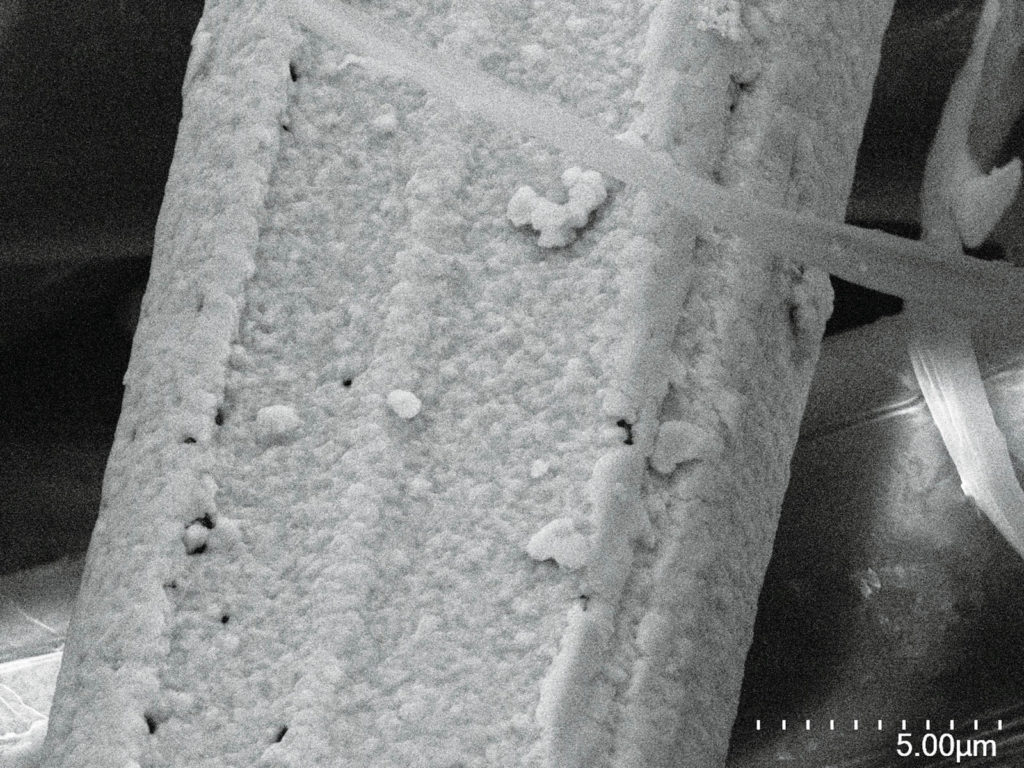
Flexible hybrid electronics (FHE) technology combines the flexibility and low cost of printed electronics technology with the performance of semiconductor devices to create a new category of electronics. No longer constrained by rigid, bulky and nonconforming printed circuit board assemblies (PCBAs), FHE technology can be applied to nearly any substrate, including textiles.
The intersection of advanced FHE capability and advanced textiles yields great promise for wearable technology. Advancements of FHE applications in physiological monitoring, situational awareness and human performance enhancement are particularly interesting areas of opportunity for the inclusion of advanced textile materials. With the game-changing nature of FHE coupled with advanced textile integration, one can expect early adoption by the modern warfighter.
Sensing systems
FHE technology is a natural fit for physiological monitoring, given its flexibility, stretchability, conformability, light weight and low profile. Sensing systems may be placed in far more intimate contact with the human system than what might be achieved by employing conventional PCBAs.
Integrating health and fitness physiological data collection with advanced textiles will likely improve on the device efficacy, while simultaneously affording the wearer convenience and ease of use. Sensors may be attached, embedded or fully integrated as part of garments that are routinely worn, such as uniforms or work clothing. Sensors could potentially be deployed wherever they would cause the least impact on the wearer while optimally collecting the target physiologic data.
In human-machine systems, much is typically known about the health, performance and safety of the machine. For example, modern automobiles have sensors and systems installed that monitor and affect engine performance and emissions and other systems that enhance the comfort, ease of operation and safety for the operator or passenger. Ironically, little data are gathered on the human operator—despite the critical importance of the human as the center of the system. FHE technology coupled with e-textiles can narrow this data gap.
Garments are already intimately part of the human system, and they are ideally suited for noninvasive sensors to monitor physiological state and performance. FHE provides the computing power to the system with flexible, lightweight microcontrollers, communication with low-power radios and antennas, and power with small or conforming batteries. Sensors and FHE technology are already part of smart watches, smart glasses and other smart wearables—e-textiles have the potential of extending these FHE devices to tunics, gloves, socks, footwear and other common articles of clothing. With this sort of coverage, as with the machine, one will be able to monitor and positively affect human performance, comfort and safety.
Military applications
Physiological monitoring is of particular significance for the U.S. military, where understanding the health, state and status of the warfighter is absolutely critical to determining readiness, survivability and mission effectiveness. FHE systems can use physiological data to derive soldier status and physiologic state. FHE systems integrated with a warfighter’s uniform and connected as part of small-unit networks will aid leaders in determining alertness, stress and fatigue, as well as individual and unit readiness status. FHE in the form of wearable bandages may aid in battlefield triage or medical “chain of custody” as the injured warfighter is medevaced from the battle.
Flexible hybrid electronics integrated with e-textiles can also provide the human system with situational awareness data and analysis. Sensors that monitor the environment can alert the wearer of potentially hazardous conditions. As an example, NextFlex, a consortium of U.S. companies, academic institutions, nonprofits and government partners working to advance FHE, has demonstrated wearable monitoring systems that help ensure the safety and well-being of aviation technicians working in confined spaces. Such solutions, integrated with clothing, enhance user compliance and the efficacy of the devices.
Other situational awareness systems might also be developed whereby the team may benefit from sensors arrayed across a small-unit network—extending the environmental sensing reach from a single individual to that of a full team. Advanced textiles with FHE antennae, low-power radios and edge computing enable an Internet of Things (IoT) environment that lends itself to timely data collection, data aggregation and rapid response time.
Applications relevant to the Department of Defense and the warfighter include situational awareness solutions in the domains of air, land, maritime and space. It is not a great stretch to imagine a battlefield with soldiers wearing individual sensing systems warning them of nuclear, biological or chemical hazards in any domain of operation, or a platoon of soldiers with the ability, through FHE-enabled uniforms, to pinpoint hostile enemy fire locations through acoustic triangulation.
Wearable and mobility devices are ubiquitous with the advent of smart phones, smart watches and smart glasses, as well as medical wearables. These devices are typically disparate with redundant power, communications and computational requirements. E-textiles are poised to potentially physically link these systems to eliminate redundancy and make smarter use of power and edge processing.
For the warfighter, an FHE system integrated into an article of clothing or piece of equipment greatly simplifies the amount of equipment and power needed. Identity/key cards or Common Access Cards may be inconspicuously worn on the sleeve rather than carried, for example.
Seamlessly integrated
FHE technology for wearable applications is a natural fit for advanced textiles. Improvements in the development of physiological sensors, ultralow power radios and microprocessors, FHE interconnect and power management have expanded the world of possibilities for wearable IoT devices. FHE applications in physiological monitoring, situation awareness and human performance enhancement will greatly benefit from the integration of advanced textile materials.
Advanced textiles will continue to play a significant role in the adoption and seamless integration of FHE devices into “smart” garments and fabrics. Through the integration of FHE devices and advanced textiles, one will be able to position multiple unobtrusive sensors where they are most efficacious and be able to efficiently manage and distribute power and provide for efficient edge computation.
American warfighters may well be among the first to enjoy the fruits of fully integrated smart garments that will enhance their health and welfare, survivability and lethality, and provide for effective command and control.
Ed Hendricks is director of business development for NextFlex, a consortium of companies, academic institutions, nonprofits and government partners formed to advance the manufacture of flexible hybrid electronics in the U.S. It is headquartered in San Jose, Calif.
SIDEBAR: Conductive Kevlar

Researchers at the National Research Centre (Canada) have developed a conductive aramid, achieved by chemically altering the surface before using an electroplating treatment to apply the silver conductive ink.
 TEXTILES.ORG
TEXTILES.ORG


